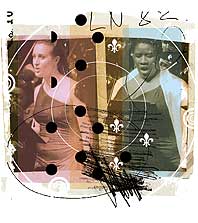
One good way to mark Juilliard’s centenary would be to celebrate the superstar musicians that the school, the country’s most prestigious seat of musical learning, has produced in 100 years. The Focus! Festival, an annual series devoted to the performance of new music, did something even better this year: It honored composers, without whom those virtuosi would have nothing to play. The festival theme was simplicity itself. Each evening featured a work especially commissioned for the centennial, a world premiere heard within the context of contrasting pieces written or completed in 2005. Taken altogether, the six programs offered 35 scores by composers from some 23 countries, fully living up to the promise of the event’s subtitle: “New & Now.”
Beyond illustrating that succinct proposition, Focus’s indefatigable artistic and administrative director, Joel Sachs, had no sermon to preach or agenda to promote. As Sachs points out in his mission statement, composers and compositional trends have been multiplying for decades, making generalizations impossible. Beyond that, any overview of the field, even one restricted to a single year, can hope to give only a small sampling of what’s going on today in new-music circles. What never ceases to astonish me, after numerous Focus! festivals, is the sheer number of composers around the globe, all hard at work and undiscouraged as they turn out music destined to be heard by only a few people. Equally impressive is the apparently limitless supply of Juilliard students who eagerly embrace so many challenging new works each year with skill and enthusiasm.
All this seems to be a good sign for the future. To judge from the four programs I heard, new music has never been more free of dogma than it is right now, as composers both junior (Dai Fujikura, 28) and senior (Milton Babbitt, 90 this year) have never felt more liberated to write exactly what their fantasy dictates. Take Mason Bates’s Digital Loom for organ and electronics, a centennial commission. Definitely a voice from the younger generation, Bates reimagines the king of instruments as a surreal creature inventing its own space, the illuminated stops flashing like an enormous pinball machine and presided over by the organist as D.J. who programs wild sequences of hip-hop, funk, and ambient electronica. A more subdued but just as compelling use of musical space, Mario Davidovsky’s Quartetto No. 4 mates the clarinet with a string trio in his commission to create a spatial design that has its own quiet dynamic and glinting instrumental colors.
New ways of using old instruments is also a concern of the moment, and the young Juilliard students seemed to relish trying. Even the titles reflect this trend: Honk, a wry piece for solo tuba by Frederic Rzewski, and Puff, a “surround sound” jeu d’esprit for wind quintet by the Swede Henrik Strindberg. But there is still plenty of juice left in traditional formats like the string quartet. I was particularly moved by Donald Martino’s Fifth String Quartet, played in memory of this underappreciated composer who died two months ago. It is a dense but always lucidly argued discussion among the players, one that positively glows with a dark, brooding intensity. Some of this music is bound to take off and find a wider audience. Until it does, thanks to Focus! and Juilliard for bringing so many worthy new scores to life.
Juilliard Focus! Festival 2006: New & Now
January 27–February 3. Peter Jay Sharp Theater.